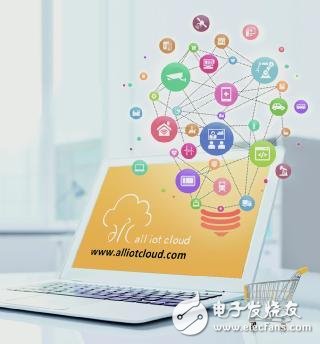The Internet of Things (IoT) has introduced a wide range of application possibilities, but the number of truly implemented projects remains limited. One major challenge is the lack of interoperability between various communication protocols, which creates significant barriers to the growth of IoT applications. Open innovation, based on shared standards, can help break down these obstacles and foster faster development.
In the past, the development of IoT applications often resembled the "barn effect." Different industries operated in their own silos, with even within the same sector, there were distinct policies, agreements, and architectures. This lack of horizontal collaboration made it difficult for technologies to communicate effectively across platforms, creating bottlenecks in progress.
Peng Qifeng, General Manager of the New China IoT Business Unit, emphasized that for IoT applications to thrive, developers should not rely solely on internal resources but instead partner with external experts across multiple fields such as energy, petrochemicals, transportation, lighting, and construction management. By connecting diverse, heterogeneous systems, more innovative applications can emerge.
However, integrating different systems and communication standards requires significant effort, time, and resources. The knowledge gained from such efforts is often not reusable or transferable, raising the entry barriers for IoT development. Many promising ideas are therefore never realized. Additionally, many devices still lack internet connectivity, preventing the full realization of IoT’s potential.
The challenge of cross-platform and cross-protocol IoT integration remains high. Peng Qifeng believes that the key to overcoming these barriers lies in "open innovation." Openness allows developers to access platforms, tools, and technologies at a lower cost, enabling them to bring their ideas to life quickly. More importantly, standardized tools reduce the risk of product isolation, as they are not tied to specific industry protocols.
Several market trends are supporting open innovation. First, cross-platform IoT technology is gaining momentum. In the past, many technologies were developed in isolated environments, limiting their usefulness outside of specific industries. Now, programming languages like C, Java, PHP, and SQL are helping bridge these gaps. Tools such as Node-RED allow developers to connect sensors and cloud platforms through a visual interface without writing code, making IoT development more accessible.
As open platforms replace exclusive technologies, the exchange of knowledge across industries is accelerating. This fosters innovation by bringing new ideas into different sectors. Another trend is the emergence of unified IoT specifications. For example, the Open Connectivity Foundation (OCF) is working toward standardization, which will unlock new business opportunities for makers and entrepreneurs.
Open-source platforms like GitHub, Intel Developer Zone, and NineWan All IoT Cloud provide developers with access to tools, resources, and communities, allowing them to solve complex problems efficiently. These platforms enable collaboration and knowledge sharing, speeding up the deployment of IoT applications.
Take NEXCOM's All IoT Cloud as an example. It embodies the principles of open innovation, offering free and downloadable tools to support the IoT ecosystem. This platform aims to simplify the process of building IoT solutions, acting as a B2B and O2O hub for the supply chain.

Caption: To make IoT applications flourish, developers should collaborate with partners across industries, breaking down vertical barriers and connecting diverse resources to create more impactful solutions.
Insulators
The four best insulators commonly used in electrical applications are:
1. Glass: Glass insulators are known for their high resistance to electrical conductivity and durability.
2. Porcelain: Porcelain insulators exhibit excellent electrical insulating properties and mechanical strength, making them suitable for various voltage levels.
3. Ceramics: Ceramics, including advanced composite materials, are chosen for their high resistance and ability to withstand harsh environmental conditions.
4. Rubber: Rubber insulators are flexible and provide good electrical insulation, often used in applications where flexibility is required, such as in some types of cables and connectors.
Insulators,Insulator Dead End Polymer,Long Rod Silicone Rubber,Composite Suspension Insulator
Shahe Yipeng Import and Export trading Co., LTD , https://www.yppolelinehardware.com
 Caption: To make IoT applications flourish, developers should collaborate with partners across industries, breaking down vertical barriers and connecting diverse resources to create more impactful solutions.
Caption: To make IoT applications flourish, developers should collaborate with partners across industries, breaking down vertical barriers and connecting diverse resources to create more impactful solutions.